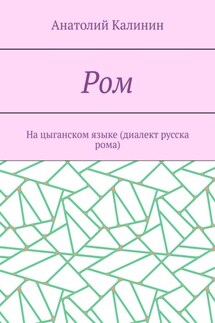Введение в теорию и практику перевода (на материале английского языка) - страница 4
In case of composite words loan-translations (кальки) can be coined in the TL, e.g. the English noun "moonquake" is quite adequately translated as "лунотрясение", "as well as the Russian "луноход" is rendered in English as "moon crawler".
The next method of translating words having no correspondence in TL is based on approximate rendering of the notion (приближенный перевод). It can be described as "translation on the analogy". If a word in SL expresses some notion that has no name in TL it is necessary to look for some analogous, similar (though not identical) notion in TL. E.g.: if we are not translating a cookery book but a story or a novel it is quite possible to translate the Russian "кисель" as "jelly", though actually they are different things (they use starch for "кисель" and gelatin for jelly). Another example – in Russia we do not use wardrobe trunks and it is next to impossible to find a Russian way of expressing this notion, but usually (unless it is very important for the context) it can be quite satisfactorily translated as чемодан (or, if necessary, большой чемодан).
The last way out of the difficulty caused by lack of correspondence between words of SL and TL is the so-called descriptive translation (описательный перевод). In this case the meaning of one word in SL is rendered by a group of words in TL ("spacewalk" – "выход в открытый космос", "spacesick" – "не переносящий условий космического полета"; "самодеятельность" – "amateur talent activities", "районирование" – "division into districts", etc.).
So there are five principal ways of translating words that have no direct lexical correspondences in TL. They are 1) transcription and transliteration, 2) footnotes and explanations, 3) loan translation, 4) analogical translation, and 5) descriptive translation. They all have certain drawbacks and their use is limited both by linguistic and extralinguistic factors (explanations make the text too long and sometimes clumsy, loan translation is applicable only to composite words, analogues are not always accurate enough, etc.). However, proper combination of these means makes it possible to translate any text rendering all the necessary information. When choosing means of translating it is also important to keep in view stylistic characteristics of the text itself and of different words in both the languages. Special attention should be paid to peculiarities of word combinability in TL, which may differ greatly from that of SL.
Translation of phrases
Usually translation of free phrases does not cause any specific difficulties. The main thing to be remembered here is the interplay of the meanings of components, because every component should be translated in such a way as to form the whole meaning of the phrase. In the English language, however, there are some types of phrases, which deserve special attention due to peculiarities of their semantic structure. Fist of all it refers to phrases with preposed attributes. All these phrases are built according to the pattern ATTRIBUTE + (ATTRIBUTE + …) + SUBSTANTIVE, but their semantic structure may vary considerably. Preposed attributes may denote properties and qualities of the substantive itself or of other attributes (cf. "south-coast convalescent camp" – where both "south-coast" and "convalescent" characterize "camp" – and "free educational institution" where "free" is not connected semantically with "institution"); besides properties and qualities, they may denote some notion with which the substantive is connected, they may express local, temporal and other characteristics. That is why it is often impossible or at least undesirable to translate such phrases using similar Russian constructions, since in Russian semantic relations between a preposed attribute and a substantive are rather uniform: if a "happy man" is certainly "счастливый человек", "a medical man" can hardly be translated as "медицинский человек". There may be several attributes in a phrase and they are not necessarily expressed by adjectives. Very often the function of a preposed attribute is fulfilled by a noun (the "stone wall" type of phrases) which, in its turn, may also have an attribute (e.g. "the front door key"). Sometimes it is not easy to see which of the nouns is characterized by a particular attribute (does "retail philanthropy business" mean "business of retail philanthropy" or "retail business of philanthropy"?). Such ambiguity is practically impossible in Russian attributive phrases.



